Welcome to the hiker’s (no ‘hitch’ needed) version of heaven, also known as Iceland, or the Land of Fire and Ice. This is where lava fields meet ice caps, and where every trail comes with a free dose of ‘wow’ (you can tip with a smile, of course).
From jaw-dropping volcano treks to glacier strolls and secret hot springs, hiking here isn’t just an activity; it’s a full-blown adventure. And if you’re doing it from a campervan, even better. Sleep by the trailhead, brew your coffee with a view, and set off whenever you fancy.
Why Iceland is a Hiker’s Paradise
There aren’t many places in the world where you can hike past a volcano in the morning, take a dip in a natural hot spring by lunch, and walk beside a selection of photogenic puffins before dinner (ok, it’s pushing it, but you definitely can experience a lot more than your average destination).
Iceland is built for exploring. With landscapes shaped by fire and ice (literally, lava vs glaciers), low crowds (except the occasional curious sheep), and hiking trails very much fitting the description of ‘off-the-beaten-track’, this is nature’s playground turned all the way up (that’s right New Zealand, I said it!)
Planning Your Hike in Iceland
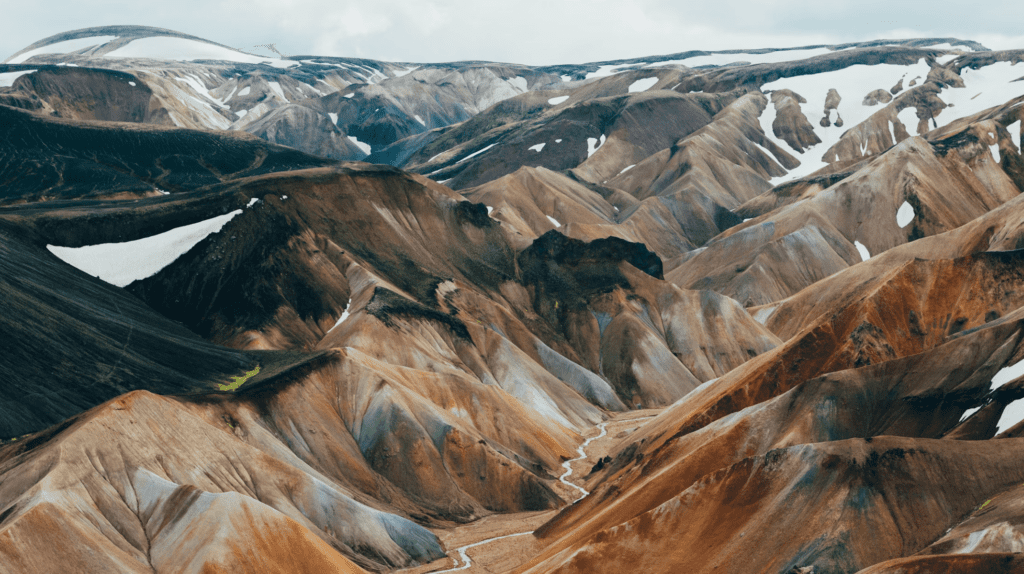
Whether you’re plotting an ambitious multi-day trek or simply fancy a leg stretch between waterfalls, a little planning goes a long way. Iceland isn’t your average hiking destination. It’s unpredictable, exhilarating, and occasionally downright bonkers (and that’s without touching on the weather). So before you lace up your boots (or panic-buy a pair on Amazon) and stride into the great unknown, here’s what you should consider.
What to Know Before You Go
Before you charge up your camera and disappear into the wild, it helps to get the lay of the land, literally and legally. From understanding where you’re allowed to walk to how not to offend a moss patch (or avoid a Bieber calamity at least), this section will walk you through the practical, cultural, and environmental must-knows. Iceland rewards the curious, but it also punishes the unprepared (crazy weather, and social media warriors combined), so let’s make sure you land in the first group.
Trail Etiquette & Preservation
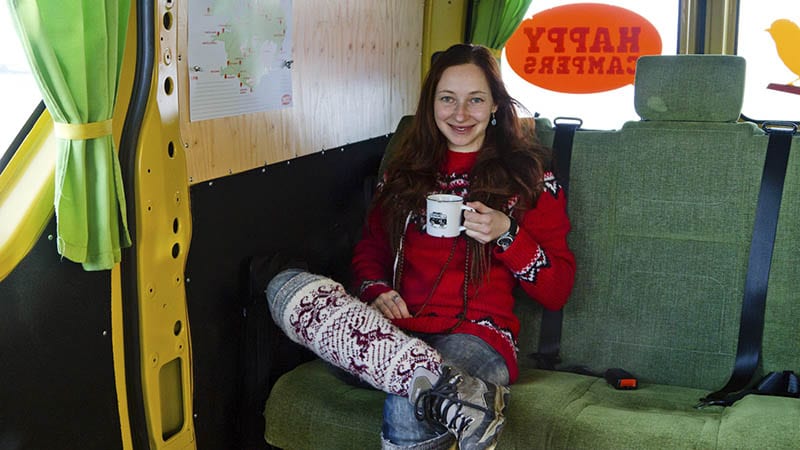
Take only memories, leave no trace should be both yours and James Bond’s mantra. Seriously. Iceland’s terrain is incredibly delicate, and it can take decades for damaged moss or soil to recover.
Always stay on marked trails, even if a shortcut looks tempting. Don’t trample vegetation, avoid walking on soft volcanic terrain, and never pitch your tent outside designated areas (I’ll allow my neighbour’s garden, though). Respect local signage, and if there’s a rope or marker in place, it’s there for a reason, and it’s not for the limbo. Also, pack out everything you bring in, which includes food scraps, general litter, tissues, and yes, even that organic banana peel. Iceland’s nature isn’t a compost bin, no matter how natural it looks (no neighbour’s garden reference here…).
Terrain Challenges & Weather Warnings
One minute it’s blue skies, the next it’s horizontal rain with a side of volcanic ash. Icelandic weather doesn’t just change, it throws a tantrum that can rival a 7-year-old blocked from Roblox (naming no names). Sunshine can flip to sleet in the space of a selfie, and gusts of wind have been known to knock over unsuspecting hikers (and the occasional campervan door).
Trails might seem friendly at first, but even in summer, they can involve slippery scree, unmarked turns, or unbridged river crossings. Snowfall can linger into July some years, or at least a storm of flurry can surprise you at any time of year, and fog can roll in faster than Google Maps can reroute you. Always check SafeTravel.is, study your planned route, and if in doubt, wait it out. Nature in Iceland is not just mossy, it’s bossy, and it doesn’t take no for an answer.
What Fitness Level Do You Need?
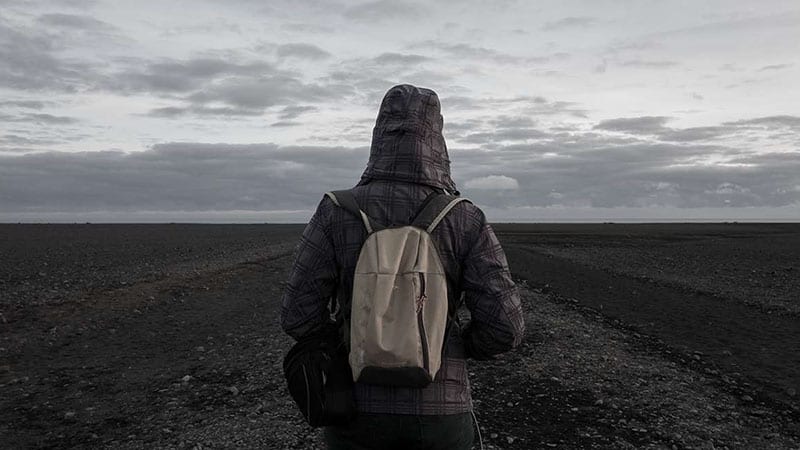
Iceland caters to hikers of all stripes, whether you’re after a peaceful ramble through a quaint valley or a lung-burning ascent to a remote summit. While you don’t need to be an ultra-marathoner, it’s worth knowing that even short hikes here can involve steep climbs, uneven surfaces, and the occasional scramble over loose volcanic rock.
The more confident you are on your feet, the more options you’ll have, and the less likely you are to end your adventure with a bruised ego or a twisted ankle, or even perhaps become a new meme shared with your nearest and dearest. So, while a decent baseline fitness is enough, a bit of pre-trip leg work won’t go to waste.
What to Pack for Hiking in Iceland
Packing for a hike in Iceland isn’t about looking good for the ‘gram. It’s about staying warm, dry, and equipped for whatever surprise this crazy island throws at you. Even short trails can feel wild and remote, and being unprepared here isn’t quirky, it’s risky.
You’ll need to pack well to handle sudden shifts in weather, after all, you’ll be exploring terrain that goes from lava rock to bog in ten steps, and the kind of cold that doesn’t care whether or not it’s beach season. Packing smart means preparing for wet boots, cold wind, blazing sun, and possibly all three in the same afternoon (bi-polar skies are more common in Iceland than you’d think).
Year-Round Essentials
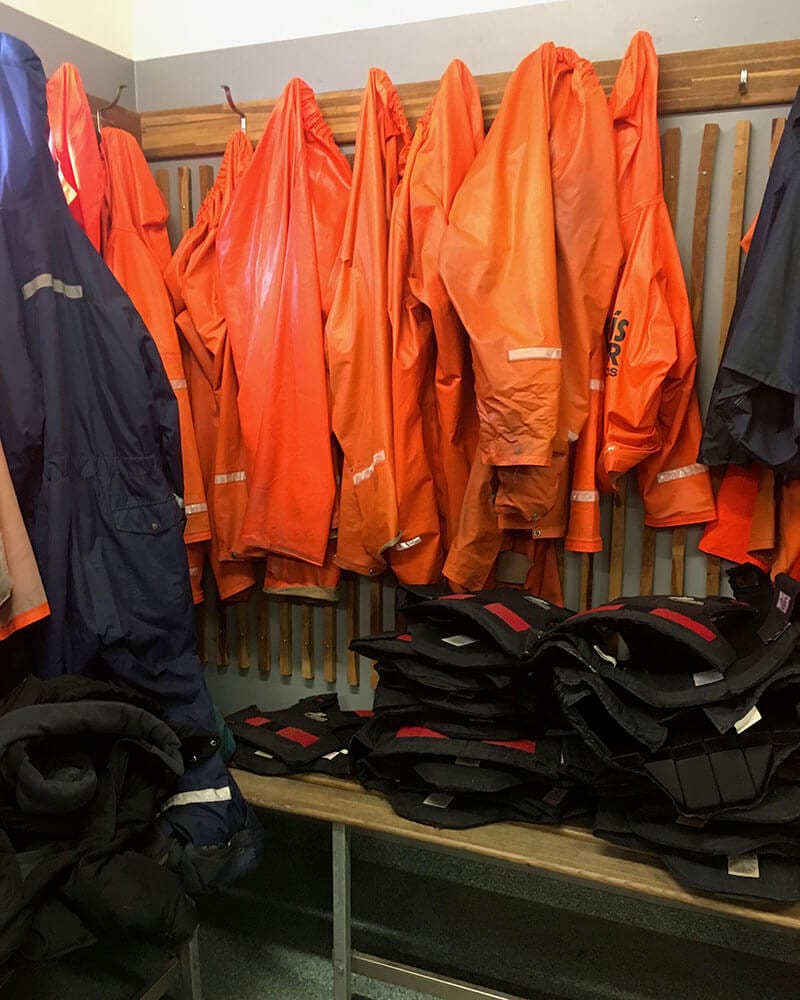
Waterproofs are like Liam Neeson in Taken – non-negotiable, no matter the forecast. You’ll also want moisture-wicking base layers, insulating mid-layers, and a windproof outer shell that can handle those sideways gusts Iceland is notoriously famous for.
Quick-dry clothing is your best friend, especially when that inviting-looking stream turns out to be a mid-trail crossing (sadly, I’ve been there too many times). A solid pair of waterproof hiking boots with good ankle support is a must. Pack a refillable water bottle, high-energy snacks (Bónus, Kronan, or Netto have you covered), and for the Bear Grylls among you a physical map can be a handy addition in case your phone decides now is the time to lose signal.
Sunglasses and sunscreen might sound odd in the land of lava and mist, but the sun reflects fiercely off snow and water, even when it’s chilly, and under the summer months, you cannot escape the light of the Midnight sun.
Gear for Glaciers and Ice
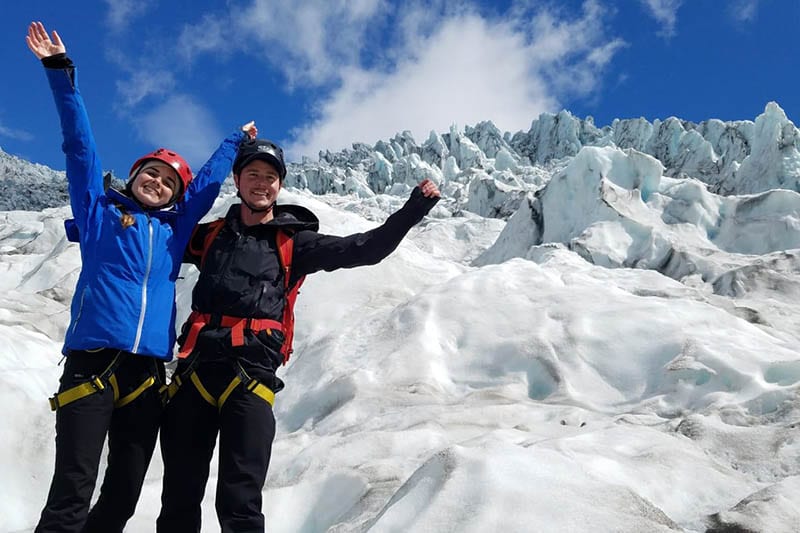
Planning on heading onto the ice? You’ll need proper glacier gear, including crampons, a harness, a helmet, and an experienced guide who knows the terrain (fortunately, there are many).
Glaciers in Iceland are not gentle snowfields. They are active, shifting giants with crevasses, unstable edges, and hidden drop-offs that can change daily (much like my bank balance). Routes may look walkable but often conceal deep cracks or slippery black ice.
Hiring a certified glacier guide or joining one of the many awesome tours not only fits you with the right safety equipment but also the knowledge to navigate safely and get the most out of the experience. Attempting to go it alone can be extremely dangerous and strictly prohibited. You’re not John Snow, so don’t chase any Wilding alone on the ice.
Best Time to Go Hiking in Iceland
June through August is when Iceland’s hiking season hits full stride. During these months, most trails are snow-free, river crossings are open and crucially become manageable, and the combination of mild temperatures and long daylight hours means you can set off after dinner and still catch the sunset (experiencing darkness at this time of year is a different kettle of fish). The ground is drier, campsite facilities are fully open, and highland routes that stay closed for most of the year finally become accessible. If you’re planning longer treks like the Laugavegur trail or high-elevation climbs, this is the sweet spot for both safety and scenery.
If you prefer fewer crowds and don’t mind a little extra weather roulette, May and September can also be brilliant times to hike. May still sees some lingering snow at higher altitudes, but the landscapes are fresh and quiet, and if you’ve read many of my travel guides, you know I promote visiting during the quieter shoulder seasons. September offers rich autumn colours, calmer winds, and better chances of spotting the Northern Lights if you’re camping overnight. Both months carry more risk of storms or muddy trails, but if you come prepared, the rewards are well worth it.
Is Winter Hiking Possible?
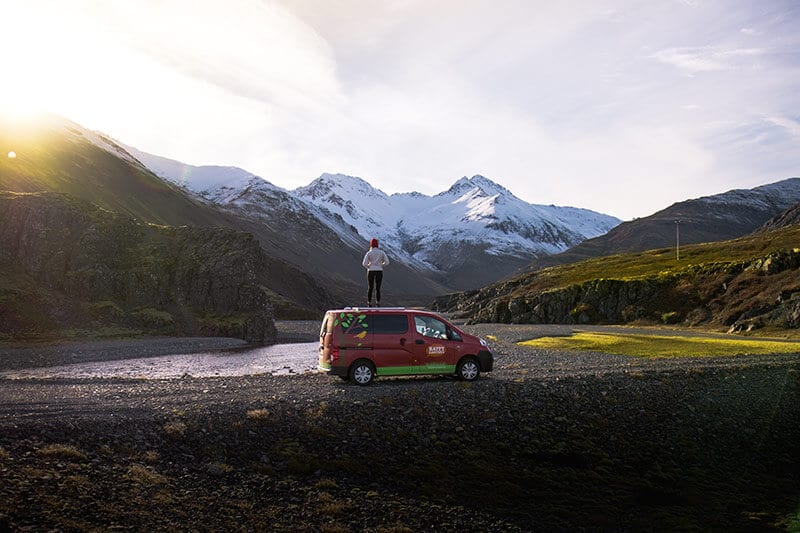
It is (cyber high five), but winter hiking in Iceland requires a cautious and well-informed approach. Many popular routes are either buried in snow or completely inaccessible, so it is essential to research which trails remain open and are considered safe for the season. Focus on low-altitude paths near major towns (ok, villages) or maintained areas where emergency access is possible.
Daylight is extremely limited between November and February, mostly giving you just a few hours to complete your hike, so time management is incredibly important unless you love to soak in those panoramic views in the dark. Snow spikes or crampons are often necessary, even on shorter trails, and extra thermal layers, waterproof outerwear, and backup supplies should be standard kit (I know I say it a lot, but layers are the essential strategy when hiking in Iceland).
As I’m sure you suspect, navigation becomes harder in poor visibility, and snowfall can quickly obscure trail markers. Never underestimate Iceland’s winter conditions. Awareness, preparation and restraint are key to staying safe and enjoying the unique experience of hiking in the off-season, assuming you want to tell the tale to others in the future.
Top Hiking Areas in Iceland
From remote glacier climbs to quick sunset strolls by the sea, Iceland’s hiking zones are as varied as they are spectacular. Each region brings something different to the table, so whether you’re after puffins, peaks, or piping-hot geothermal rivers with a load of strangers in their swimsuits, you’re about to find your trail match.
The Icelandic Highlands
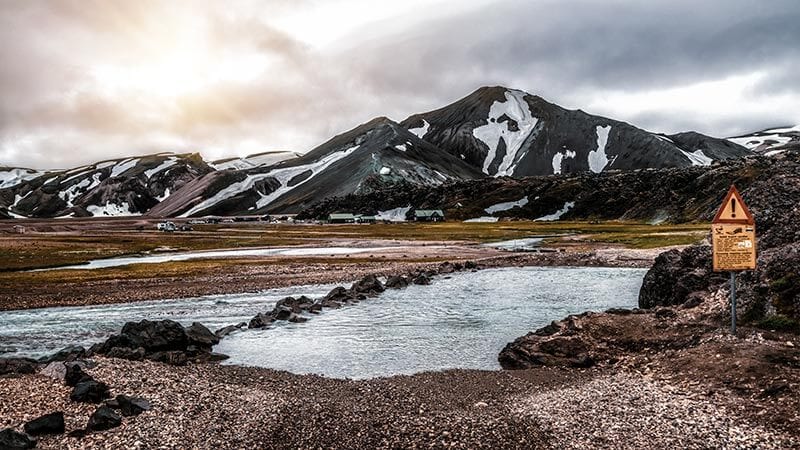
This is Iceland’s ultimate backcountry, perfect for those wanting to get off-the-beaten-track (a very accurate cliché). Tucked into the centre of the island like a lava-scorched secret, the Icelandic Highlands are as raw and isolated as the landscape gets.
Access is limited to the summer months, and even then, only with a 4×4 (we got you covered with the campers) and a sense of adventure. There are no towns, no gas stations, and often no mobile signal, just a wild expanse of glaciers, steaming vents, windswept valleys, and trails that offer huge rewards for those brav enough to explore them.
If you’re looking to swap crowds for complete silence and swap paved paths for rugged, sometimes stumbly terrain, this is your next great escape.
Laugavegur Trail
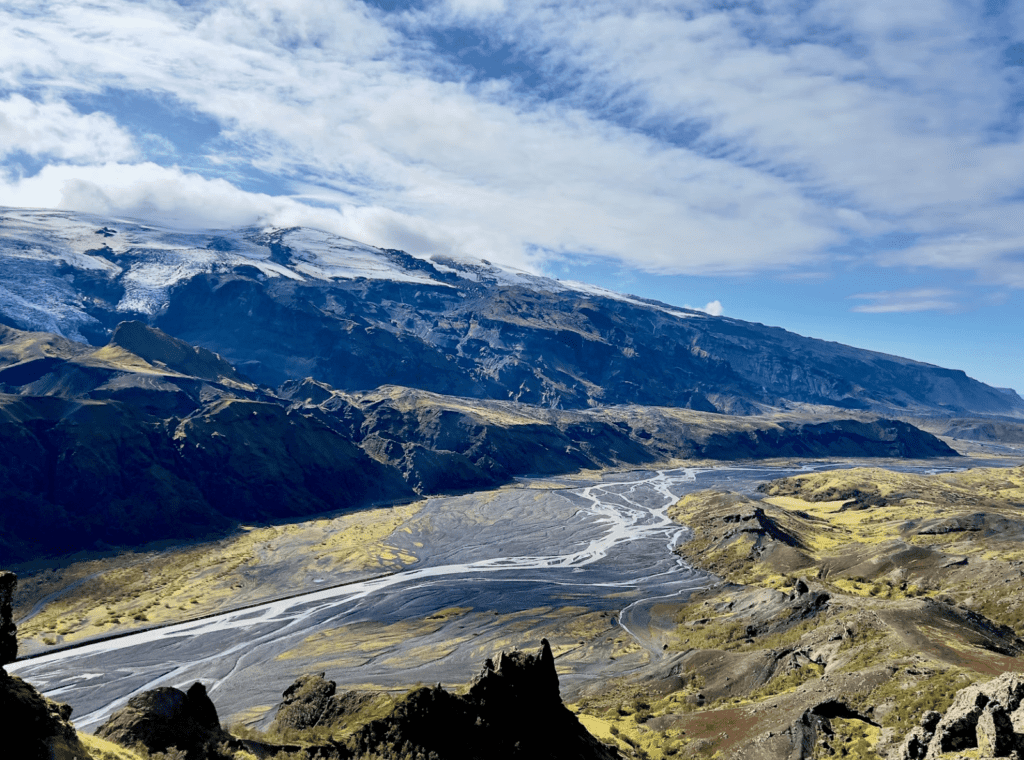
Often hailed as Iceland’s greatest trek, this 55 kilometre route stretches from the steaming valleys of Landmannalaugar to the lush birch forests of Þórsmörk. Along the way, hikers cross a surreal mix of obsidian lava fields, rhyolite mountains painted in sunset hues, icy river crossings, and valleys shaped by glacial melt and volcanic fury (you get used to that). It is not just the changing terrain that makes the Laugavegur Trail unforgettable, but the sense that you are walking through Iceland’s geological history with every step.
The trail can be done in four to five days, with mountain huts and campsites along the way, and rewards those who come prepared with solitude, panoramic views, and the kind of exhaustion that feels weirdly satisfying. If you’re like a good friend of mine, you might even consider running the Laugavegur trail for a sense of the ultramarathon life (it’s organised in July each year)
Fimmvörðuháls Pass
This unforgettable route links the volcanic wonderland of Fimmvörðuháls with the vast landscapes of Þórsmörk and Skógar, taking you up and over the dramatic pass that separates the Mýrdalsjökull and Eyjafjallajökull glaciers.
Along the way, you’ll encounter the still-warm craters Magni and Móði, born from the 2010 eruption that famously grounded planes across Europe, which we all saw as the warm-up act for the larger Eyjafjallajökull eruption which started a few weeks later.
The trail itself is a rollercoaster of steep ascents, shifting lava fields, black sand plateaus, and jaw-dropping waterfalls including the mighty Skógafoss. While it can be hiked in a long single day, many pair it with the Laugavegur Trail to create one of the most legendary multi-day adventures in the country. Expect wild scenery, unpredictable weather, and a sense of awe that builds with every step.
Landmannalaugar Trails
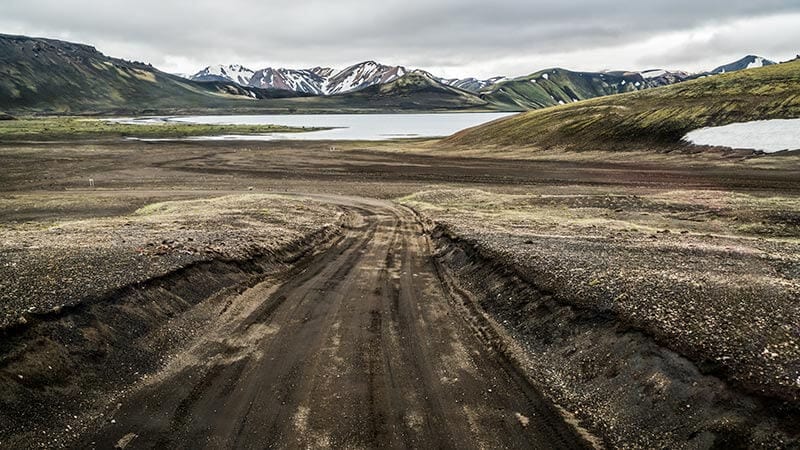
Not every adventure needs to be a multi-day expedition. Landmannalaugar offers a collection of shorter trails that deliver some serious scenery without requiring days on the trail.
Blue Peak (Bláhnjúkur) provides sweeping views across the geothermal valley and is great for catching the sunrise if you’re camped nearby. Ugly Puddle (Ljótipollur) is far from ugly, featuring a rich array of colours and bubbling springs that surprise you around each bend.
Green Ridge (Grænihryggur) is a favourite for those wanting a dramatic ridge experience with panoramic views of volcanic plains and distant glaciers (a normal everyday decision I’m sure). These trails let you soak in the magic of the Highlands with just a basic backpack and a good pair of walking boots.
Sprengisandur Ski Traverse
This is Iceland’s Arctic epic in every sense. The Sprengisandur Ski Traverse is not your average trail but a demanding cross-country route that cuts through the heart of the uninhabited interior. You’ll be skiing across wind-blasted plateaus, frozen riverbeds, and wide expanses of snow-covered volcanic desert with nothing but your provisions and your navigation skills to rely on.
The route is rarely marked and entirely unserviced, requiring full self-sufficiency, advanced winter survival knowledge, and precise coordination. Weather can turn quickly, whiteouts are common, and mobile reception is notoriously sketchy. Attempting this traverse is a serious commitment that demands careful planning, strong physical endurance, and respect for the raw forces of nature. It is not one for first-timers, but for those who prepare properly, it offers a truly rare and wild Icelandic experience. It’s not for the faint-hearted, but it is an incredible journey if you’re well skilled to take it.
Askja & Herðubreiðarlindir Trail

This surreal trail combines two of Iceland’s most iconic geological features into one unforgettable trek. As you make your way toward Askja, you’ll pass vast black sand deserts, bubbling geothermal vents, and craters filled with turquoise water that seem entirely out of place in such a barren setting (you can also drive right to it…just saying).
The path genuinely feels like you’re wandering around on an alien planet, and it only gets more dramatic as Herðubreið comes into view. Known as the Queen of Icelandic Mountains (give her a bow or curtsy), Herðubreið rises sharply from the Ódáðahraun lava field and is famed for both its beauty and isolation. The trail is remote, challenging, and incredibly rewarding for those who come prepared with navigation tools, strong legs, and an appreciation for Iceland’s stranger side.
Kerlingarfjöll and Hveradalir
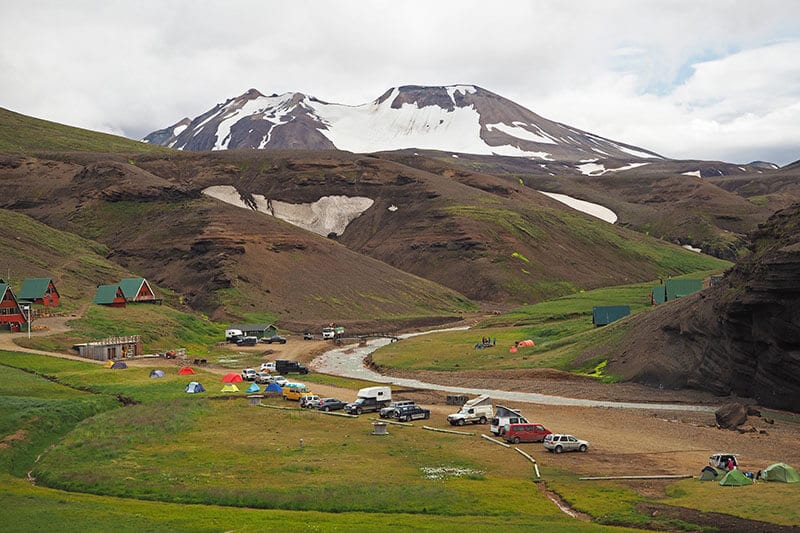
These vividly painted mountains and valleys are among the most surreal in the Highlands (and over-shared on Instagram in my opinion), where rust-orange ridges meet jade green moss and sulfuric steam rises from beneath your boots. Trails here weave through hot springs, bubbling mud pots, and steaming fumaroles (they smell a bit like gravy to me), offering close-up views of the planet’s inner workings just beneath the surface.
With elevation changes, narrow ridgelines, and thermally active zones around every bend, it is a hiker’s playground and a geologist’s dream rolled into one. While many visitors come for the colours, the quiet remoteness and raw energy of this area leave just as lasting an impression.
Vatnajökull National Park
Sprawling across nearly one-tenth of the country, Vatnajökull National Park is Iceland at its most epic and untamed. It holds the largest glacier in Europe, but its appeal stretches far beyond the ice. The park combines powerful geological contrasts with rare biodiversity, where lava fields, glacial rivers, active volcanoes, and green oases exist side by side.
Hikers can explore deep canyons, climb ancient ice caps, or follow trails that trace the edges of active rift zones with a number of highly active volcanoes creeping underneath (ahem, Bárðarbunga).
With remote interior access and some of the most diverse ecosystems in the country, it offers more than just unique walks, it delivers a complete immersion into Iceland’s powerful natural forces.
Skaftafell Trails
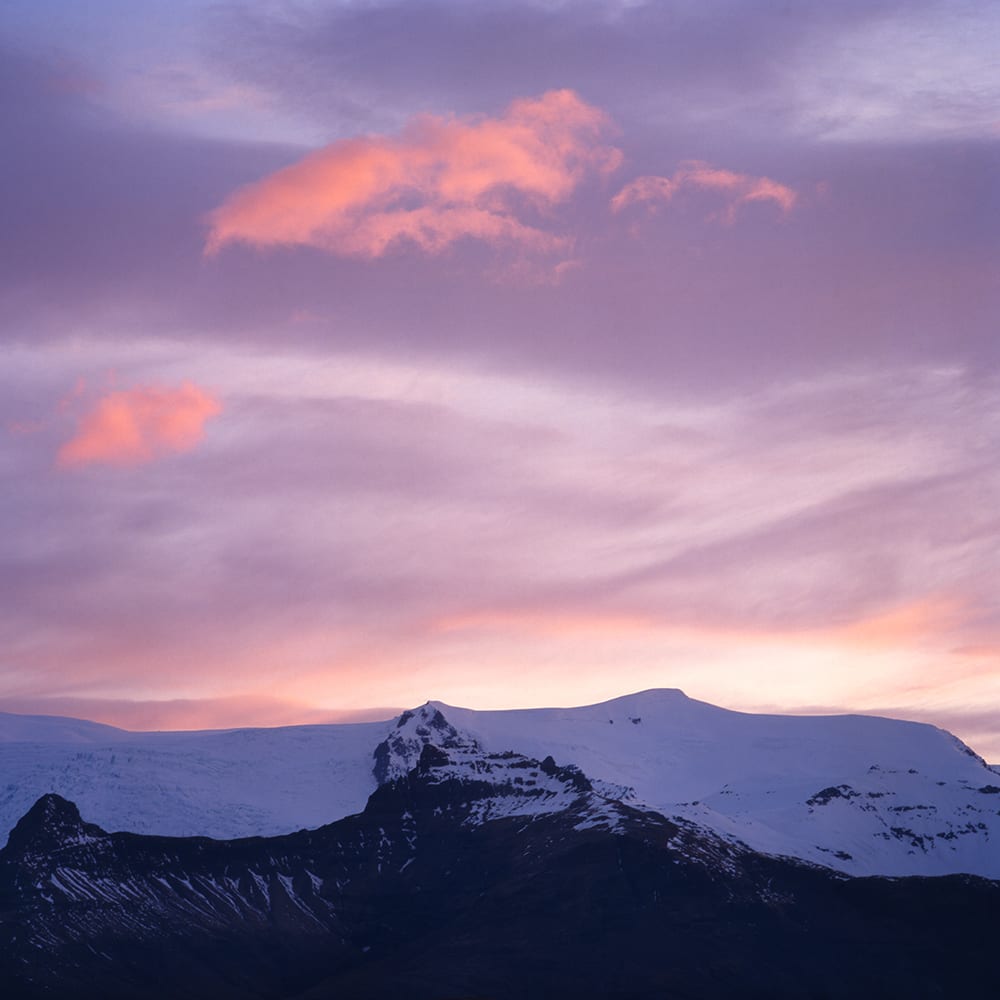 Pink skies at night in Skaftafell
Pink skies at night in Skaftafell
Skaftafell offers an accessible yet diverse collection of trails that showcase the incredible variety packed into this corner of the park. You can wander through a mossy birch forest to reach Svartifoss, a striking basalt-column waterfall so pretty it even inspired the architecture of Reykjavík’s Hallgrímkirkja church design.
Head up to Sjónarnípa for expansive glacier views that stretch across the icy tongues of Skaftafellsjökull, perfect for grasping the scale of Vatnajökull itself. For those keen to step onto the glacier, guided walks start from the visitor centre and take you directly onto the ancient ice.
Each trail here delivers its own flavour of Iceland’s drama, making Skaftafell ideal for half-day or full-day hikes packed with photo-worthy moments and surprising terrain changes. And, to top it off there is a great campsite here where you can wake up to some of the most incredible views of the glacial tongues from.
Hvannadalshnjúkur Summit
Standing at over two thousand one hundred metres, Hvannadalshnjúkur towers above Iceland as its highest summit and a serious badge of honour for any hiker who makes it to the top (a true Walter Mitty level hike is needed here). The climb takes you across crevassed glaciers, steep snow slopes, and exposed ridgelines that demand both physical endurance and proper alpine skills. It is not a casual day out but a full-scale mountaineering challenge that typically takes between twelve and fifteen hours round trip.
Hikers must join a guided tour, as navigating the icy terrain safely requires specialist knowledge and equipment. In return, those who complete the climb are rewarded with sweeping views across Vatnajökull, the Atlantic Ocean, and Iceland’s dramatic southern coast that few others get the honour of witnessing…assuming the weather behaves long enough to let you see it.
Núpsstaðaskógar Trek
This hidden gem of a trek winds through dense woodlands and steep-sided canyons carved by glacial rivers over millennia (yes, there’s a trend in Iceland). The trail offers a rare combination in Iceland: lush vegetation, dramatic ravines, and the sense that you’re exploring a lost world untouched by time. Expect narrow footpaths, moss-draped rock walls, and the occasional log bridge to get your heart rate up, making that Garmin product suddenly seem worth it. Perfect for those looking for a trail which should really be described as a real-world challenge, it feels like the kind of route where elves wouldn’t be entirely out of place, so let me know!
Glacier Walks on Vatnajökull
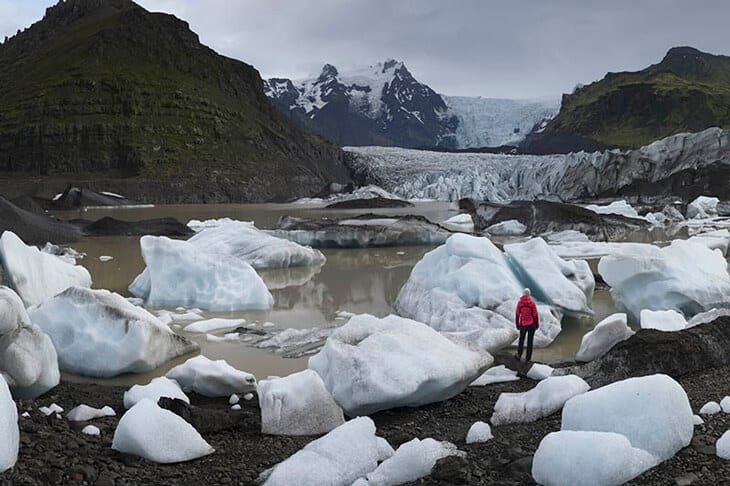
Joining a guided glacier walk on Vatnajökull is one of the most exhilarating and humbling experiences you can have in Iceland. You’ll strap on crampons and summon your ice axe, follow an expert guide across glistening ice, and navigate deep crevasses, blue meltwater channels, and ancient ice formations sculpted by wind and eons of time. Along the way, you’ll learn about the glacier’s movement, its connection to Iceland’s volcanic systems, and the stark reality of climate change visible in its retreating edge. Tours cater to different skill levels, from short introductory walks to more advanced ice-climbing excursions, making it accessible yet awe-inspiring for nearly everyone.
Lónsöræfi Trek
Tucked away in the southeastern interior, the Lónsöræfi Trek is one of Iceland’s true hidden treasures. This remote region features a combination of towering rhyolite ridges, glacial valleys, and some of the oldest exposed rock formations in the country. The terrain is demanding, often requiring unassisted river crossings and steep climbs, but those who take it on are rewarded with solitude and jaw-dropping views in every direction. Trails here pass through colourful mineral slopes, icy streams, and high mountain passes, all while keeping you blissfully disconnected from civilisation. It is not an entry-level route, but for experienced hikers seeking quiet, challenge, and untouched wilderness, it is nothing short of unforgettable (so don’t forget it!)
East Iceland
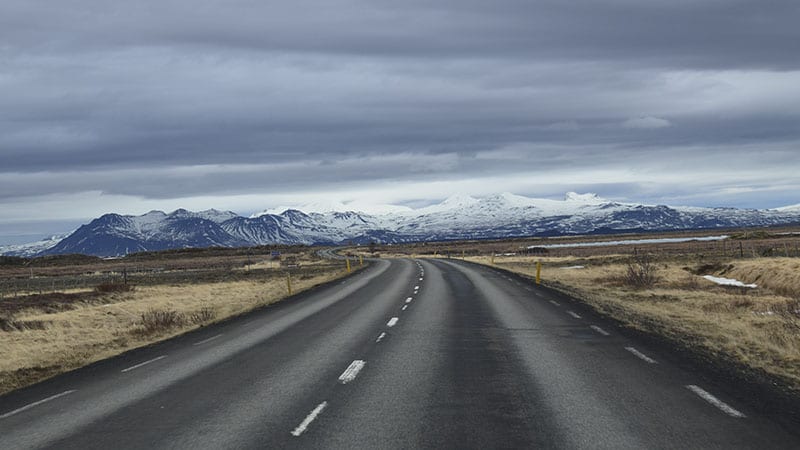
East Iceland remains one of the country’s most underrated regions, not for lack of beauty but because it’s often overshadowed by its more visited cousins to the south and west. What this side of the island offers, however, is an authentic, slower-paced wilderness where dramatic mountain backdrops meet long-forgotten valleys and fishing villages hold secrets of centuries past (including one covered in French signs and street names). Trails here wind through rarely travelled terrain, inviting the kind of immersive solitude that’s increasingly hard to come by in the modern world.
Stórurð & Dyrfjöll
Stórurð feels like nature’s secret sculpture garden, where turquoise ponds sit between grass-lined hollows and house-sized boulders are scattered like the playground of ancient giants (also known as trolls in Iceland). The trail winds through a landscape shaped by glacial action once again, leading you through a unique terrain of mossy stones, still waters, and towering cliffs. Each bend reveals something unexpected, from crystal-clear pools to oddly balanced rocks that defy logic. Despite its surreal beauty, the area remains quiet and uncrowded, offering hikers a rare mix of serenity and spectacle deep in the shadow of the Dyrfjöll mountains.
Víknaslóðir Trail System
Winding along cliffs and weaving between remote fishing inlets, the Víknaslóðir trail system opens up a side of Iceland few ever see. These paths offer a blend of quiet seascapes, ancient trade routes, and much lesser-visited valleys where you can hike for hours without crossing another soul. The stillness here is profound, broken only by birdsong and the rhythmic crash of distant waves.
Snæfell Summit
Snæfell rises above the eastern highlands like a silent sentinel, cloaked in snow for much of the year and offering commanding views on the rare days it reveals its summit. Reaching the top requires patience, a well-planned route, and a careful eye on the forecast. The ascent weaves through barren lava fields and over scree slopes that can become treacherous with even a hint of rain. Though less frequented than Iceland’s western summits, Snæfell is a rewarding challenge for those with strong navigation skills and a taste for isolation. I will warn you, however, you will be more sweat than person by the end of this hike.
South Iceland
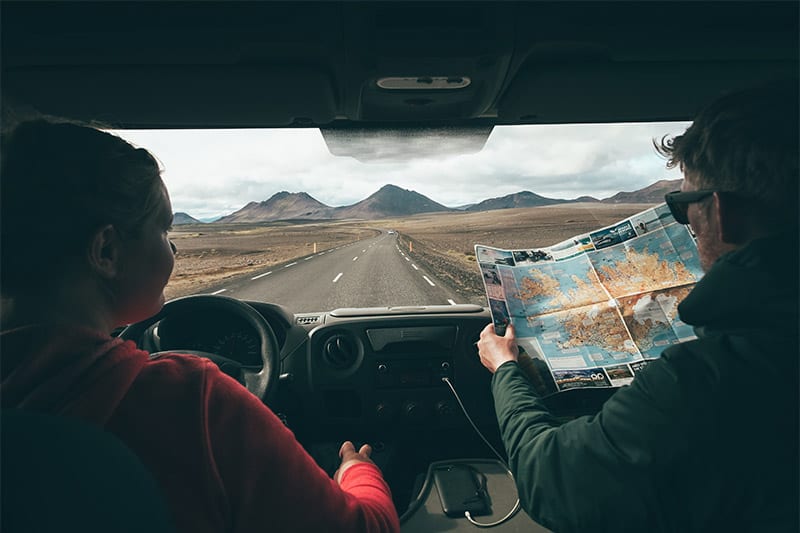
South Iceland is where the nature seems to put on its matinee performance, pulling back the curtain on some of the island’s boldest landscapes. Here, you’ll find a stretch of land sculpted by ancient forces (yes, that means lot’s of volcanoes and glaciers, you caught me), where elemental contrasts play out across glacier-fed rivers, fertile plains, and brooding mountains. The region’s unique geography makes it a magnet for photographers, wildlife watchers, and geology lovers alike. It’s a place that doesn’t whisper its appeal, it roars, constantly shifting with volcanic energy and the endless motion of ice and water. And, yes, it gives surprise eruptions and glacier floods (Jökulhlaups) whenever it wants to make things extra exciting.
Glacier Panorama Trail
Set beneath the icy reach of Mýrdalsjökull, this hike offers a rare chance to get up close to glacial scenery without an arduous climb or an all-day commitment. The trail is well-marked and accessible for most fitness levels, winding through mossy terrain with scattered rock formations and sweeping views of distant mountain ridges. Perfect for those with limited time or looking for a low-impact introduction to Iceland’s dramatic southern landscapes, this trail still delivers the kind of sights that usually require a much tougher trek.
Reynisfjall near Vík
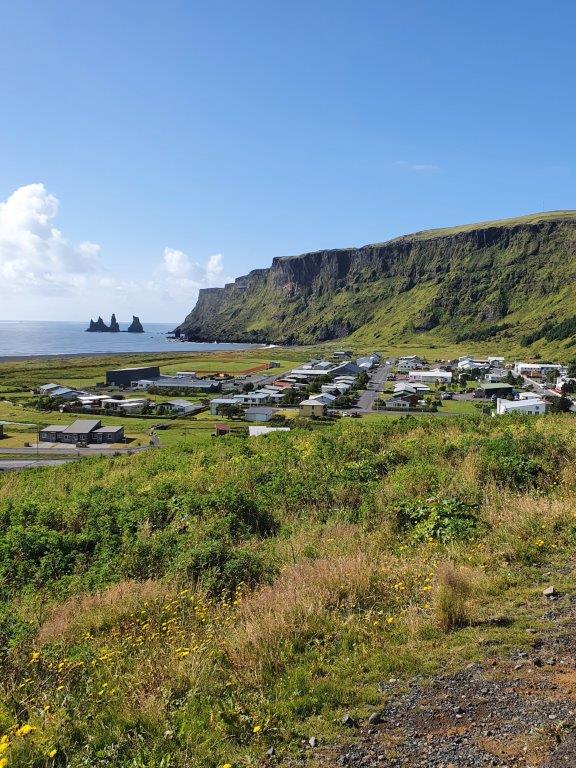
Trace a winding cliffside path that hovers above Reynisfjara’s volcanic sands, with panoramic views across crashing waves and the basalt sea stacks of the stunned trolls of Reynsidrangar (they should have know when to run from the sun is all I’m saying). During nesting season, the cliffs become a lively theatre of puffin activity, offering a rare chance to watch these charming birds swoop, dive, and squabble just metres away.
Þakgil Trail System
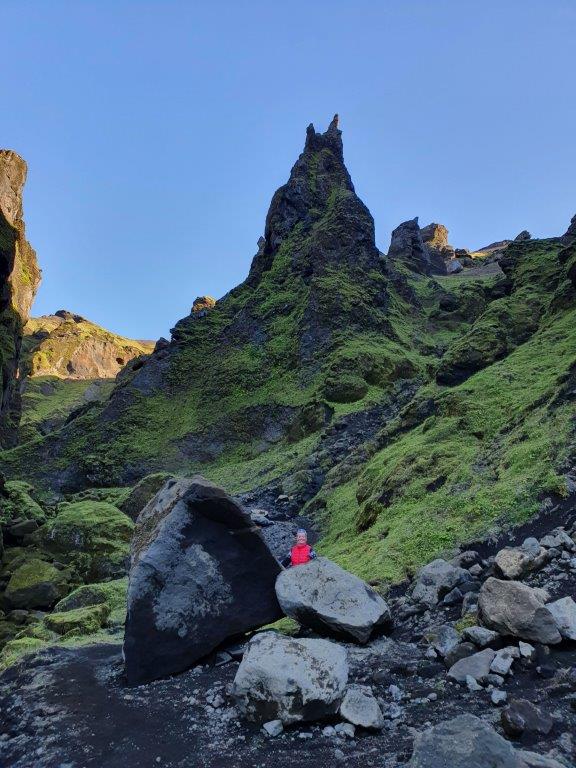
Þakgil offers a welcome contrast to Iceland’s harsher volcanic zones, with a trail system that winds through deep canyons, past gnarled rock outcrops, and into pockets of lush vegetation nourished by glacial melt and coastal moisture. The area is shielded from the worst of the wind by steep ridges, making it one of the more tranquil hiking spots in the region despite being pretty close to the mighty Eyjafjallajökull volcano. Hidden caves, mossy trails, and unexpected vistas give the whole valley an unearthly charm, especially when low clouds roll in and lend it an air of misty mystery. It’s a pocket of peace tucked away from the crowds, where nature feels intimate and enchantingly unpredictable, as well as being one of our teams favourite campsites along the south coast.
Reykjadalur Hot River Hike

Follow a well-marked trail into a geothermal valley where steam curls from the hillsides and sulphur-scented air gives the landscape almost a living feeling. The route leads gradually upward through a lush, green ravine dotted with bubbling springs and hot pools. As you ascend, wide views open over the surrounding countryside, with pockets of wildflowers in summer and birdsong carried on the breeze.
The final reward is a soothing stretch of naturally heated river, where hikers can settle into the warm shallows and let the current do the work of a spa day. It’s a balanced blend of a stunning hiking and restorative soaking in nature’s own hot tub (though you do need to hike back after you’ve relaxed!) Also, remember this is a very popular and well-know trail, and by that I mean there are no changing facilities, so it’s time to perfect that towel magic we’ve all done at the beach in the past.
Hengill Volcanic Area Trails
Step into yet another geothermal realm where the landscape bubbles and hisses beneath your boots. The Hengill area is a patchwork of craters, mud pots, and steaming vents, shaped by the restless tectonic forces that still stir below the surface. Trails criss-cross through vibrant hills and geothermal seams, with occasional glimpses of Reykjavík and Þingvallavatn in the distance. Rich in both geological interest and rugged beauty, the region feels like a living, breathing part of the earth’s crust, constantly shifting and revealing something new. And, for the nerds amongst you, yes it was part of the filming in Game of Thrones.
West Iceland
West Iceland is a land of contrasts packed into a manageable corner of the country. With its mixture of rugged coastline, serene fjords, and ice-capped peaks, the region is perfect for those who want variety without venturing too far from civilisation (still pretty far). It’s a place where folklore runs as deep as the fjords, and trails often lead you through landscapes steeped in old sagas and quiet wonder. You can expect peaceful paths, dramatic views, and a sense that you’re walking through stories as much as scenery, and perhaps even making your own (with no tragedy!)
Arnarstapi to Hellnar Coastal Trail
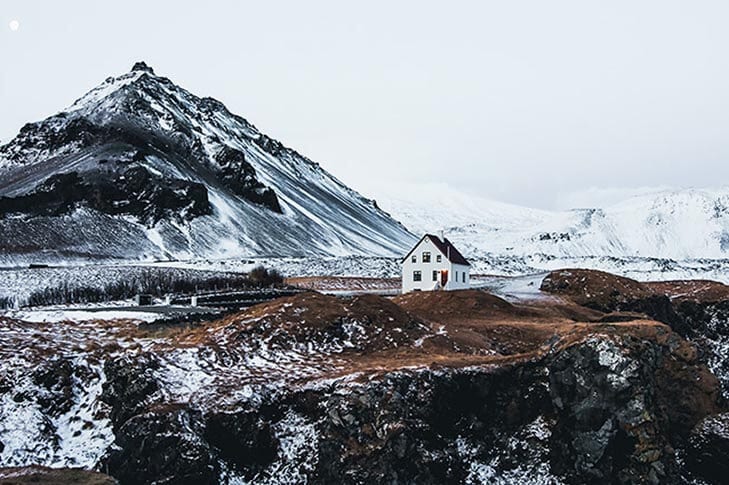
A gentle coastal walk that effortlessly combines natural beauty with cultural intrigue. The route meanders along dramatic cliffs and lava formations sculpted by the sea, offering an ever-changing canvas of light, sound, and texture. Ideal for a relaxing stroll that still delivers cinematic views and the occasional seabird photo op, this trail also whispers the old tales of the Snæfellsnes Peninsula if you listen closely enough. There are some classic photographic shots from Arnarstapi, so make sure you stop at the cafe there for a snap and a coffee.
Snæfellsjökull Glacier Hike
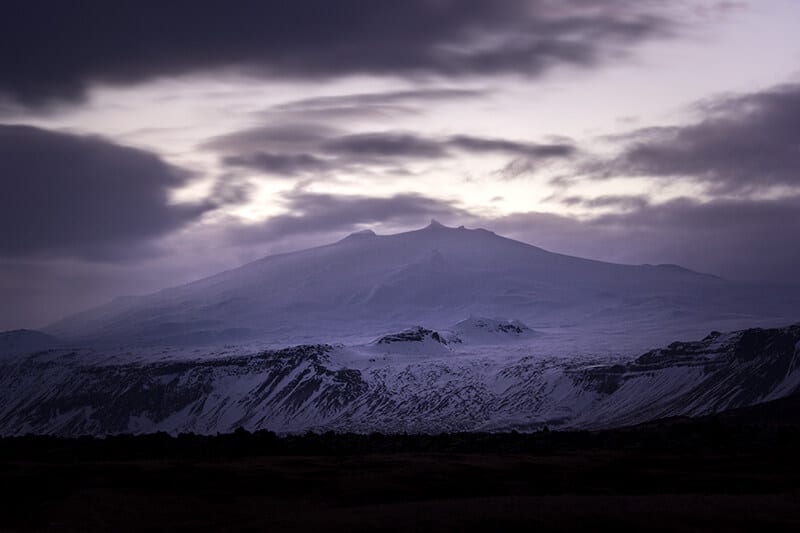
Step onto the very glacier that stirred Jules Verne’s imagination and helped launch one of the greatest fictional expeditions in literary history. With its shimmering slopes, deep crevasses, and sweeping views across the Snæfellsnes Peninsula, this hike offers more than just physical challenge, it taps into a sense of adventure that has inspired explorers, writers, and dreamers for generations. Whether you’re in it for the views or the bragging rights, this is a climb that delivers far more than altitude. And, if you’re not too sure what to expect, on a clear day in Reykjavík, look out to the coast in a north-western direction and you’ll see this goliath towering in the distance (and, no, this does not prove the flat Earth theory!)
Glymur Waterfall Trail
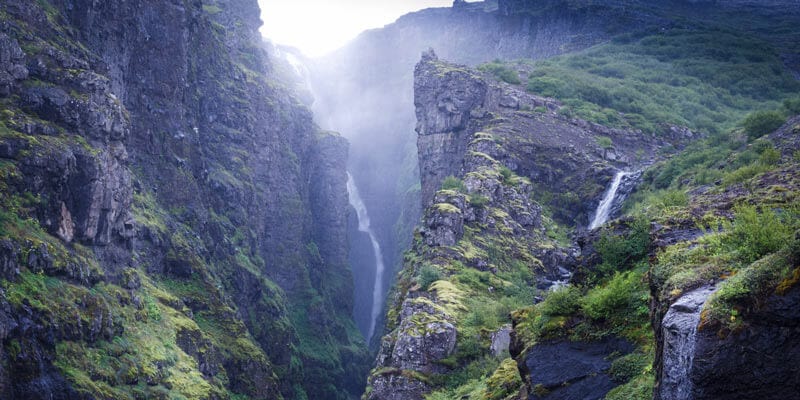
This dramatic trail leads you into a steep-walled canyon where nature flexes its muscles. River crossings keep things interesting, while the cave adds an unexpected element of exploration. As you ascend, the roar of Glymur grows louder, until you reach a vantage point that feels very Jurassic Park in my opinion. Mist rises from the gorge, and the sheer drop commands both awe and caution. The route isn’t just a walk to a waterfall, it’s an evolving experience that stirs the senses and leaves a lasting impression. It’s a relatively straightforward hike but should only be done in the summer months to avoid any slippy icey paths, as well as the required log crossing not being in place during the rest of the year.
Fagradalsfjall Volcano Hike
The ground may still be cooling in places, but the route has already captured the imagination of thousands. It winds through a landscape in transition, where raw earth, scorched ridgelines, and new formations make each visit feel like the beginning of a myth. With every step, you’re not just walking alonngside a volcano, you’re walking through the story it’s still writing, and it’s anticipated to write for another 100 years according to volcanologists. Be careful, however, as this is very much a highly active region and must be treated with extreme caution and accompanied by a proper expert.
Westfjords
The Westfjords remain one of Iceland’s most secluded regions, offering a the only landscape in Iceland which avoids a volcanic trail (that we know of) and is vastly untouched by the usual tourist trail. With dramatic cliffs, hidden coves, and winding fjords that will both induce the sweat on the steep drives and provide an over-ambundance of photo stops, it’s a haven for those seeking solitude and raw nature. Here, hiking isn’t just about movement; it’s about embracing silence, stillness, and the subtle drama of the wild. And, here a hike can mean avoiding others for days and crossing great expanses of land. In my humble opinion, it is the most beautiful region in Iceland.
Látrabjarg Sea Cliffs Trail
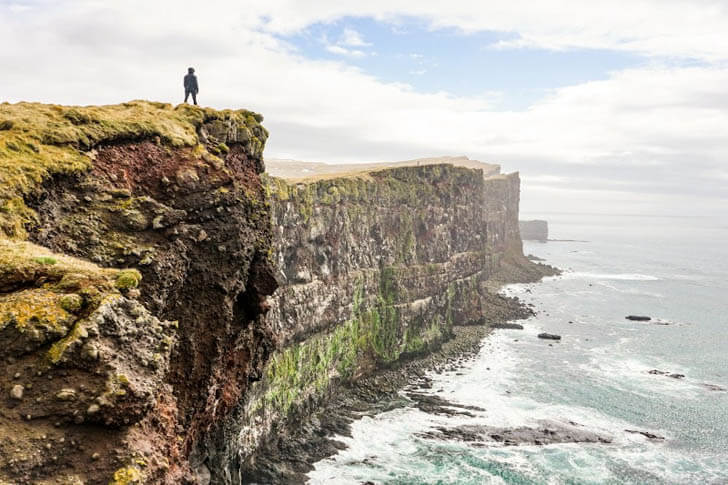
Imagine standing on the rim of the continent, where the land stops abruptly and the Atlantic surges below. Látrabjarg isn’t just a great view, it’s a vertigo-inducing spectacle of sea cliffs teeming with life and framed by the endless horizon. It’s a bit of a drive to get to but if you crawl close to the cliff edge in the summer season you’ll be greeted by those lovely clowns of the sky (Puffins) that are on every tea towel in Iceland.
Hornstrandir Nature Reserve Multi-Day Hikes
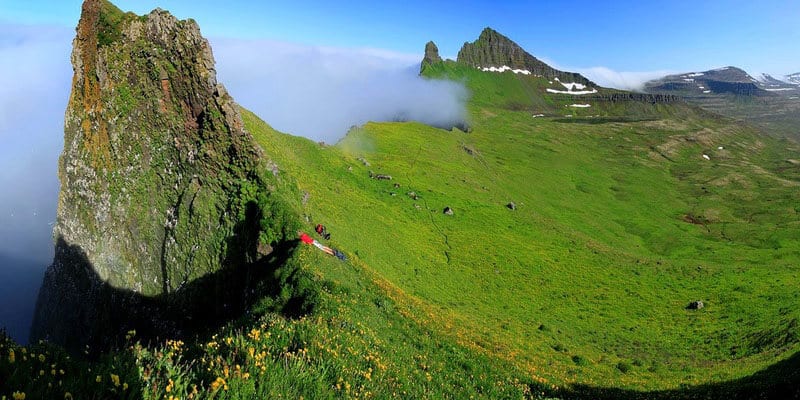
No infrastructure. No crowds. Just sweeping, untouched wilderness where nature writes the rules and your phone politely bows out. Expect long days of solitude, shifting terrain, and the chance to spot arctic foxes in their natural environement. This is one of the few places left where you can genuinely disappear, and love every second of it. It’s not for the faint of heart, as if you’re conducting the full hike from south to north you’ll need to pack for a 5-7 day hike, but trust me it’s worth it. Many tourist destinations claim solitude, but this provides it on a different level. If you’re legs can push away the vertigo, climb the signature Hornbjarg sea cliff, and then come down and quietly base yourself in a good position to watch the enigmatic fantastic Arctic Foxes.
Reykjavík Area Hikes
Being close to Reykjavík doesn’t mean giving up on nature. The area is packed with accessible trails that offer a quick escape from urban life, whether you’re chasing a post-coffee climb or want to clear your head before dinner. It’s a rare blend of convenience and wildness, perfect for travellers on a tight schedule who still crave a sense of Iceland’s rugged landscape. And, if I’m being honest with you, many are massively neglected by the locals.
Esja (Steinn & Þverfellshorn)
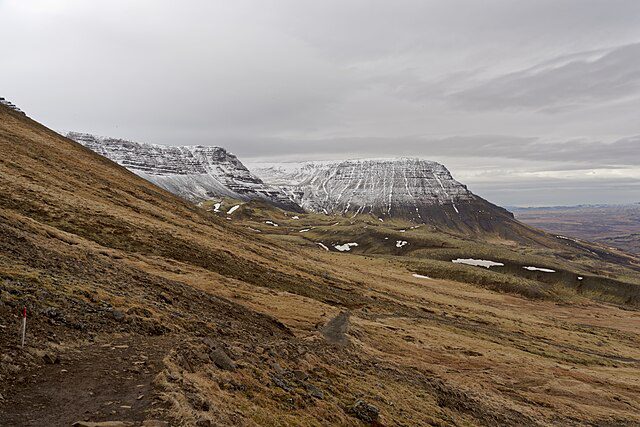 Photo Credit: Jakub Hałun via Wikimedia C.C.
Photo Credit: Jakub Hałun via Wikimedia C.C.
Esja stands as Reykjavík’s unofficial mountain gym, attracting locals and travellers alike who want quick access to the wild without straying far from the city (usually people pointing over from the city with the classic claim of “I could climb that!)” The trail offers a gradient of challenge, from leisurely starts to steeper pushes near the top, and rewards climbers with views that stretch from urban rooftops to distant fjords. It’s a favourite for pre-brunch climbs and post-work leg-burns alike. Most casual trekkers will complete the loop from Stein (it’s marked on a rock…and the word means ‘rock’), but those wanting to get to the peak will have to navigate a more intense part of the climb which also involves some hanging chains to support.
Keilir Mountain
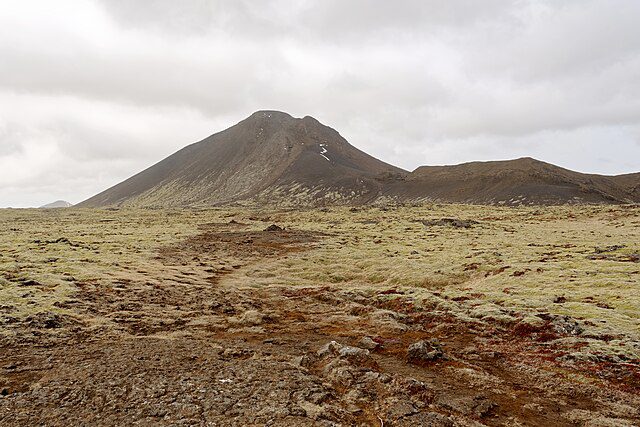 Photo Credit: Jakub Hałun via Wikimedia C.C.
Photo Credit: Jakub Hałun via Wikimedia C.C.
Keilir’s symmetrical shape might trick you into thinking it’s a casual climb, but don’t be fooled. The route involves loose scree, exposed ridges, and steep gradients that demand focus and decent footwear. The final push to the summit rewards your effort with panoramic views stretching across the Reykjanes Peninsula and over to Snæfellsjökull on a clear day. It’s a short hike, but it punches above its weight in challenge and reward. Nowadays, this coned-shape mountain sits within the very highly volcanic active region of Svartsengi, so if you insist on this trek, please stay up to date with the safety guidelines and restrictions.
Vífilsfell & Jósepsdalur
This area offers a compelling mix of accessible adventure and quiet natural beauty, where volcanic paths thread through grassy lowlands and gentle slopes. Ideal for spontaneous day hikes or a scenic break away from city life, it provides a taste of Iceland’s geological wonders without requiring an extensive detour or technical gear. Whether you’re easing into your hiking journey or seeking a relaxed outing with striking terrain, this trail system strikes a perfect balance between effort and reward, and can add a great extra when you feel you’ve seen most of Reykjavík faster than you anticipated.
Móskarðshnjúkar
It may be a mouthful to pronounce, but the reward is well worth the effort. Móskarðshnjúkar’s vividly coloured rhyolite slopes make for a striking visual contrast against the surrounding darker peaks, offering hikers a unique geological experience within easy reach of Reykjavík. The ascent is relatively short yet invigorating, with sweeping views of the Mosfellsdalur valley and surrounding ranges awaiting those who reach the summit. Ideal for a half-day adventure, this trail is both a sneaky little escape and a fascinating insight into Iceland’s dynamic volcanic past without the drama of the bubbling Reykjanes Peninsula (for now!)
Essential Safety Tips When Hiking in Iceland
Iceland may resemble a scene straight out of folklore, but behind the postcard-perfect views lies a landscape that demands caution and respect. With its ever-changing weather systems, rugged terrain, and remote locations, even a simple hike can turn into a logistical challenge or a safety concern if you’re unprepared, and my dear friend, safety doesn’t take a holiday. The natural elements here aren’t just part of the backdrop, they are active forces that shape every moment of your journey. After all, your hiking adventure can suddenly provide the treat of snow in midsummer, gusts strong enough to knock you sideways, and trails that vanish beneath fog or floodwaters in minutes. Preparation isn’t just sensible, it’s essential. Here’s how to stay safe, informed, and one step ahead of Iceland’s wild side.
Dress in Layers, Always!
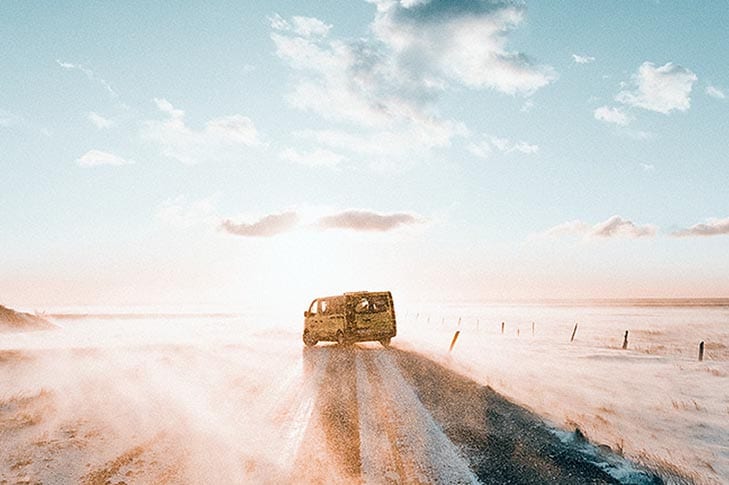
The weather in Iceland is famously unpredictable. You might be basking in warm sunshine one minute, only to be pelted by icy sleet the next. Dressing in multiple layers is the key to staying comfortable and safe in such volatile conditions. Start with a breathable base layer to wick away moisture, add an insulating middle layer to retain body heat, and finish with a waterproof, windproof outer shell to fend off the elements. This flexible system allows you to adjust as quickly as the weather changes, without having to stop and completely change outfits. Think of it like packing a wardrobe into a single outfit, which is functional, adaptable, and essential for survival out here. It also allows you to look smug in front of your fellow trekkers, which is an opportunity you won’t want to miss.
Use the SafeTravel App
The SafeTravel app is an essential companion for every hiker exploring Iceland. It allows you to register your travel plans with the Icelandic search and rescue service, which can significantly reduce response times if something goes wrong. The app lets you check in daily, update your route if needed, and access real-time alerts about weather or trail conditions. By sharing your itinerary, you make it easier for emergency services to locate you quickly in case of trouble, especially in remote areas where mobile coverage can be very limited or temperamental. It’s not just a safety measure, it’s a responsible choice that could save your life or the lives of others which I always recommend to this hiking enthusiasts visiting our shores.
Carry a Compass + Map (and know how to use them)
A simple GPS on a Germin watch or Google Maps on your phone can be a powerful tool, but it’s not foolproof. Devices can lose signal in remote areas, glitch during critical moments, or simply run out of battery when you need them most. Carrying a physical map and compass is an old school tried and trusted approach, which makes a reliable backup that works no matter the conditions. Knowing how to use them could make the difference between staying on track and getting completely turned around in Iceland’s unpredictable wilderness. Also, it’s a great way to put Gen Z back in it’s place, which again is an opportunity not to be missed! (I love you really, Gen Z!)
Stay on Top of Weather and Road Conditions

Before setting out on any hike, visit Vedur.is for the latest weather updates and Road.is to check road accessibility and potential closures due to weather or flooding. Conditions can change rapidly, especially in mountainous or remote areas, and what starts as a calm day can quickly become hazardous. These two resources are essential for gauging both trail safety and the viability of your planned route, particularly in regions with river crossings or unpaved access roads.
Travel Insurance & Emergency Numbers
When planning on exploring some of the great hiking trails in Iceland, suitable travel insurance that covers medical emergencies, search and rescue costs, and unexpected travel disruptions can be a good way to keep yourself covered and for peace of mind. The island’s unpredictable terrain and weather mean even experienced hikers can find themselves in need of urgent help, and costs can be substantial if you’re not properly covered.
Make sure your policy includes highland or backcountry activities if you plan to explore remote areas. And most importantly, keep the number 112 saved and accessible, which is Iceland’s emergency hotline, used for everything from medical issues to natural hazards. Even if it’s not about a lost drone, it might just save your life. Almost all modern phones now come with a decent SOS feature, so don’t stress about forgetting this number.
What Else You Need to Know About Hiking in Iceland
Still unsure about a few things? You’re not alone, and it’s usually the overlooked details that end up mattering the most. This final section dives into those practical, quirky, and sometimes odd questions that pop up as you’re packing your equipment, squinting at the weather forecast, or staring down a fork in the trail. Whether it’s understanding what footwear is truly trail-worthy, figuring out how to handle sudden weather chaos, or debating whether to bring that extra snack or spare socks, this is where we shine a light on the lesser-known but utterly useful stuff. But, you can always ask our team for their advice if I miss anything off.
When is The Best Month to Go Hiking in Iceland?
July is the peak of Iceland’s hiking season for good reason. Most trails across the country are fully accessible, river levels have dropped to their most manageable, and the combination of long daylight hours with relatively stable weather creates the perfect conditions for extended adventures.
Campsites and Highland routes are generally open, and highland buses operate a full schedule. It’s also the time when flora is at its most vibrant and wildlife encounters are more frequent. August closely follows with similar trail access and slightly fewer crowds, though there’s a subtle shift toward autumn by the end of the month (this is also when the Northern Lights gets involved again), making it another excellent option for those seeking both comfort and a touch of seasonal change.
Do You Need a Hiking Guide?
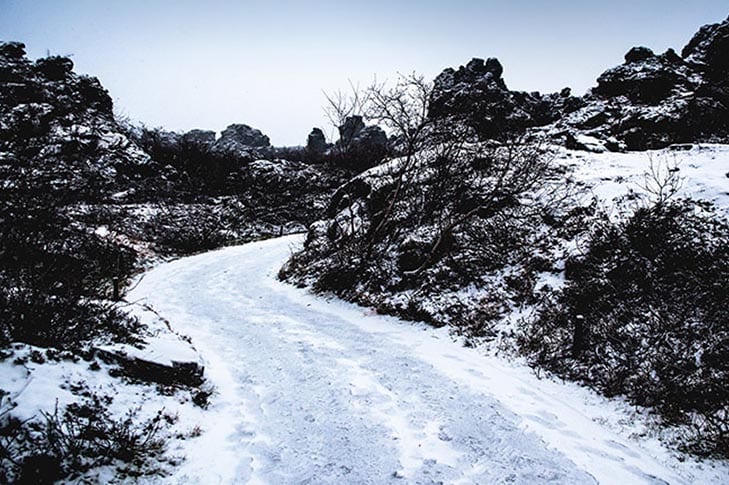
If you’re heading onto a glacier, a certified guide is absolutely essential. These frozen landscapes are filled with hidden crevasses, unstable ice formations, and rapidly changing conditions that require experience and safety equipment to navigate properly.
For hikes that involve steep, unmarked, or especially remote terrain, hiring a guide can mean the difference between a smooth adventure and a dangerous misstep. They bring not only expert knowledge of the environment but also real-time decision-making in unpredictable weather, which can be the difference between a safe return or whether you also become another Troll in the landscape.
As for the easier routes, while a guide isn’t always necessary, going with someone who knows the land can enhance your understanding of the landscape, local history, and geology. And sure, if you want to impress your mates with your glacier credentials and trail stories, a guide can make that part even better too.
Easiest vs. Toughest Hikes in Iceland
If you’re after a gentle introduction to Iceland’s trails, the coastal path from Arnarstapi to Hellnar is your go-to. It’s short, mostly flat, and offers stunning seaside views with minimal effort, making it ideal for families, beginners, or anyone looking for a casual stroll that still feels deeply scenic.
On the flip side, Iceland’s most demanding hikes include summiting Hvannadalshnjúkur, which involves glacier travel, crevasse navigation, and high-altitude stamina (yes, you need a guide), or embarking on a multi-day wilderness trek through Hornstrandir, where you’ll face complete remoteness, unpredictable weather, and no infrastructure whatsoever.
These routes are for highly experienced hikers with a taste for challenge and a strong sense of self-reliance. From relaxing rambles to serious expeditions, Iceland truly offers something for every kind of adventurer, and you really can’t go wrong no matter which option you choose.
Are Glacier Hikes Worth it?

Absolutely. Glacier hiking in Iceland isn’t just a walk on ice, it’s a journey across a constantly shifting landscape shaped by volcanic heat and Arctic cold. These frozen rivers crack, swell, and groan beneath your feet, revealing ancient blue ice, crevasses deep enough to vanish into, and meltwater channels that trace the glacier’s hidden movement.
It’s equal parts exhilarating and humbling. But this isn’t the place for DIY adventures. Glaciers are dynamic and unpredictable, and without a trained guide, what looks like a solid path could be a thin crust hiding a dangerous void. A certified guide will equip you with crampons, a harness, your own ice axe, and expert knowledge of the terrain, turning what could be a hazardous gamble into a safe, awe-inspiring experience you’ll never forget.
Can You Hike in Trainers?
Not unless you’re hoping for soggy socks, sprained ankles, and the kind of squelching sound that ruins every step. Icelandic terrain throws enough at you without inviting injury or frostbite into the mix. Proper hiking boots with waterproofing, ankle support, and solid tread are essential for keeping your footing on everything from loose scree to glacier melt puddles. Leave the casual trainers at home, or in yoru camper while out adventuring, as they simply aren’t built for this eclectic landscape.
Conclusion
Hiking in Iceland isn’t just about reaching the summit or ticking off a trail. It’s about the adventure, sweat and all. The steam rising from the earth. The crunch of volcanic gravel. The silence of the Highlands. And that wild, unfiltered feeling that this place is a unique, living, breathing part of the world unlike many other destinations.
And with a campervan, you get to wake up right in the heart of it.
So grab your boots, fill up your thermos, and hit the road. Iceland’s trails are calling, and they’re not ones to be ignored (just occasionally by the locals).
Back